Text
Good on Paper
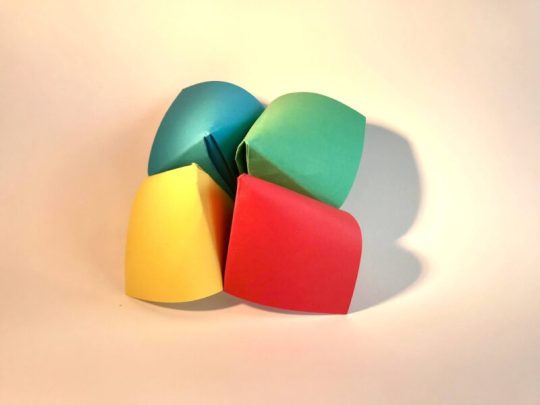
Good on Paper is a research project initiated by Gordon Douglas and Cicely Farrer looking into the futures of performance art making in Scotland. They are working with MAP Magazine on a series of texts through spring/summer 2022 and instigating a series of interviews and workshops with performance artists in Scotland.
Performance & Language: https://mapmagazine.co.uk/good-on-paper-first-invitation-performance-language
Performance & Energy: https://mapmagazine.co.uk/performance-energy-2nd-invitation-from-good-on-paper
Good on Paper is supported by the National Lottery through Creative Scotland.
Gordon Douglas is a performance artist in Glasgow. He plays games with organisational staff and their stakeholders, celebrates birthdays amidst austerity, and holds it together before breaking down in offices. He is currently cardbearer for Good on Paper.
Cicely Farrer is a curator on the North East Coast of Scotland. Day to day she facilitates artist residencies, pedagogical events and workshops and supports artists to create new work including performance. She invests her time considering the invisible support structures for artists.
The project runs from Summer 2021 - Spring 2023
0 notes
Video
youtube
Artist Jann Haworth in Conversation with Cicely Farrer ‘Alternative Ways of Living – an experience of Hospitalfield’ Friday 10 July 5pm GMT
Part of the Stories from Hospitalfield programme
http://hospitalfield.org.uk/stories-from-hospitalfield-jann-haworth/
0 notes
Photo

I wrote about the Artist Moving Image Festival at Tramway recently which you can read online...
https://mapmagazine.co.uk/hanging-out
Image: Appau Jnr Boakye Yiadom, During: Adaptive Rhythm, 2019
0 notes
Text
I am a curator and writer based on the east coast of Scotland, UK. My curatorial practice is situated across performance, residencies, writing and supporting artists on new commissions.
As present, I am interested in residency facilitation, private performances, script writing as institutional critique, feminist methodologies for curating and group working models.
I work full time at Hospitalfield in Arbroath as Programme & Communications Manager. This involves managing and facilitating the Residencies programme, working with artists on new commissions and events for the Open Weekends and managing communications.
This blog is an archive of my previous and current events, exhibitions, collaborations and writing.
0 notes
Text
Do you keep thinking there must be another way
15 FEBRUARY – 27 APRIL 2019
FREE EXHIBITION
MIMOSA HOUSE LONDON
Artists: Georgia Horgan, Lee Lozano, Howardena Pindell
Polvo de Gallina Negra, Raju Rage, Georgia Sagri and Emma Talbot

Emma Talbot, 21st Century Sleepwalk, 2018, acrylic on silk, image courtesy the artist
Do you keep thinking there must be another way is a group exhibition that addresses strategies of representation, resistance and withdrawal. Including installation, painting, performance, text and video, the exhibition considers behaviours towards, and in opposition of, presiding power structures.
Spanning across two floors of Mimosa House, Do you keep thinking there must be another way presents historic and contemporary works that generate discussions on identity and labour. Within the works strategies for collaborative exchange are mapped out and tactics that include honesty, parody and poetry are employed.
Do you keep thinking there must be another way’s title is taken from Emma Talbot’s work 21st Century Sleepwalk (2018). In the exhibition, the title acts as a proposition to consider the ways that artists question and dismantle imposed hierarchies within professional and personal spheres. The intergenerational grouping of artists in this exhibition points to the continuing work that empowers multiple ways of living and working.
The exhibition includes a series of talks, screenings, workshops and readings that take place throughout the exhibition, including contributions by: Rose English, Karen Di Franco, Caspar Heinemann, Georgia Horgan and Jennifer Kabat.
Saturday 9 March, 3pm
A study group with artist Rose English and writer Jennifer Kabat to re-examine the subversive performance Mounting by Rose English, Jacky Lansley and Sally Potter that took place at Modern Art Oxford in 1977 amidst a Frank Stella painting exhibition. Free event, please click here to RSVP
Saturday 23 March, 3pm
An afternoon sharing readings of new texts by Caspar Heinemann, Georgia Horgan and Karen Di Franco in response to Lee Lozano's infamous boycott of women. Free event, please click here to RSVP
Do you keep thinking there must be another way is curated by Cicely Farrer, Daria Khan and Jessica Vaughan, with thanks to Ellen Greig and Bryony James.
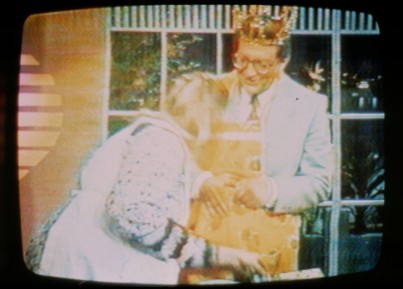
Still from MADRE POR UN DIA II, by Polvo de Gallina Negra. 1987. Television broadcast. Nuestro Mundo, presented by Guillermo Ochoa (courtesy the artists; exh. Mimosa House, London).
Review
The exhibition was reviewed by writer and curator Helena Reckitt for Burlington Contemporary: http://contemporary.burlington.org.uk/reviews/reviews/feminist-acts-of-resistance-and-withdrawal-in-london
Generously supported by Arts Council England, Creative Scotland and Hauser & Wirth

0 notes
Text
Sustain your errors
Taking this idea as a starting point, we would like you to interpret this principle
Sustain your errors was a series of workshops and events in Dundee re-interpreting a set of ideas by artist and musician David Cunningham first used for his 1976 vinyl LP Grey Scale. I instigated and organised this project based on conversation with David Cunningham around his Error System scores.
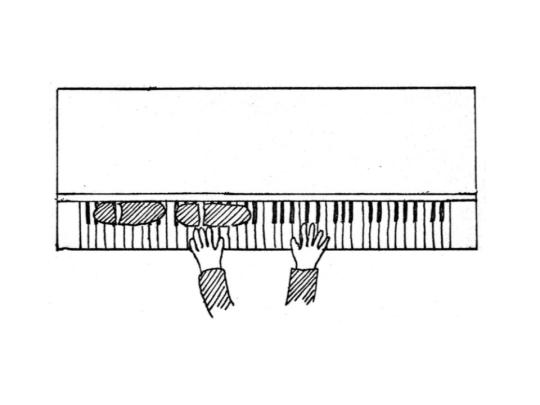

Event during NEoN: Testing the Error System
Saturday 10 November, 2-3pm
Centrespace Gallery, Dundee Contemporary Arts, Nethergate, Dundee
In an introduction to the project during NEoN Digital Arts Festival, Cicely Farrer invited artist Katie Hare to together explore the ‘error system’ in the algorithmic age, through sound, projection and human movement, expanding the score ideas presented in Cunningham’s album in a new performative encounter.
The event featured interpretations of the Error System scores as well as new works made in response. David Cunningham’s Grass Film (1978/2006) was exhibited in the space alongside the text of the Error System (1976) and Katie Hare’s video work The Edge of the Frame
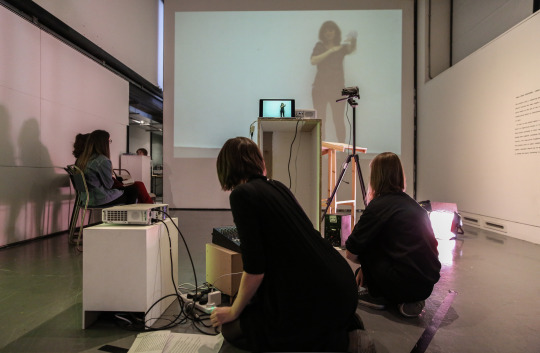
Cicely Farrer and Katie Hare. Photo by Erika Stevenson.
Workshops
Friday 23 & Saturday 24 November 2018
Vision Building, 20 Greenmarket, Dundee, DD1 4QB
Two days of workshops led by movement artist Saffy Setohy and media archivist / musician Adam Lockhart and 8 artist / musician / computing participants to experiment with David Cunningham's Error Systems scores in small group structures.
Workshop participants were artists and musicians Jenny Caplan, Jo Hansen, Ana Hine, Jek McAllister, Finlay McDermid, Saskia Singer and Mark Spalding.
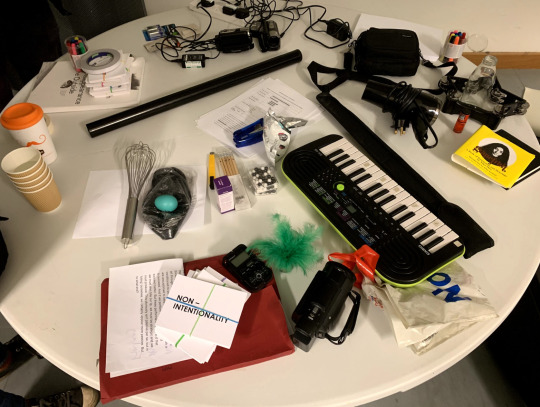
Performance Evening
Saturday 24 November, 6-8pm
Presentations of work by workshop participants as well as performances by invited artists Saoirse Anis and Atzi Muramatsu
Vision Building, 20 Greenmarket, Dundee, DD1 4QB

Workshop Participants interpret David Cunningham's score Small Group Structures: Error System. Facilitated by movement artist and choreographer Saffy Setohy. Photo by Cara Pirie.
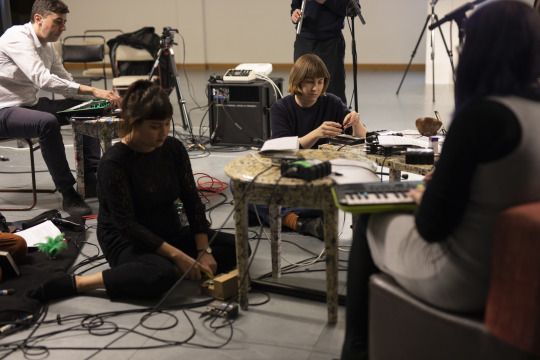
Workshop Participants interpret David Cunningham's score Small Group Structures: Error System. Facilitated by media archivist and musician Adam Lockhart. Photo by Cara Pirie.

Workshop Participants interpret David Cunningham's score Brazil/Bolivia. Facilitated by movement artist and choreographer Saffy Setohy. Photo by Cara Pirie.
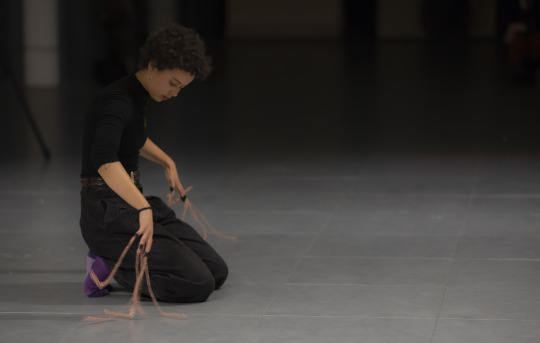
Direction Of The Groove, performance by artist Saoirse Anis in response to David Cunningham's score Record Player & Accompaniment. Photo by Cara Pirie.
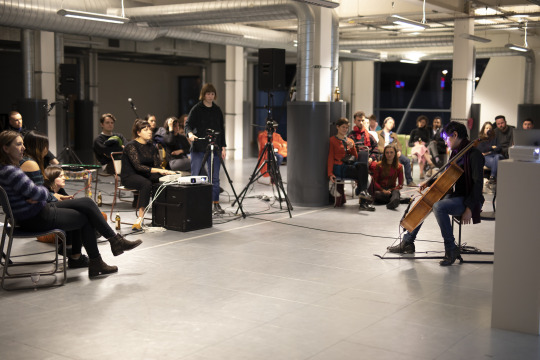
Atzi Muramatsu response to the Error System score with real time projection improvisation by Jek McAllister and Saskia Singer. Photo by Cara Pirie.
Introduction to David Cunningham’s Error System
David Cunningham’s art work evades visual description as it is mostly real-time sound based and site specific. His installations and performances are experienced across sound, music, light, movement and the architectures of space. He frequently using a systems approach. This systems approach could be through a sound loop, overlapping cycles, a set of instructions, collaborative conditions or the space the work inhabits. Sustain your errors, invited responses that could include music as well as controllable writing, real time visuals, such as dance, simple mechanical or human movement, or video installation.
Sustain your errors draws on an early work of David’s, Grey Scale, for which he set up scores for rhythmic playing systems in the production of his sound work in the late 70s. In its original form, Grey Scale is an album that was originally released as a vinyl record in a grey card sleeve in 1976. The album features tracks which are played across a range of instruments, percussion, tape recorders, synthesisers and water.
The project is based on conversations between Cicely Farrer and David Cunningham around ways of interpreting the scores and their guiding principles.
Cicely Farrer was mentored in the delivery of the project by artist Pernille Spence

0 notes
Text
“Doing Science in a Gendered World”
I’m developing a project at LifeSpace in Dundee titled “Doing Science in a Gendered World” that launches this summer and culminates with an exhibition in February - May 2019. The exhibition will feature art works, case studies and literature. The project is supported by the University of Dundee’s School of Life Sciences Athena SWAN gender equality charter.
The title, “Doing Science in a Gendered World”, refers to the idea that all work, whether artistic, scientific, or otherwise, takes place within a set of societal infrastructures. These could be the operational systems of an institution, the learnt behaviours of the people we come into contact with, the historical methods of doing work, or the imagery and rhetoric we see via advertisements or social media. The intention is to present art works that consider the gendered experience in a way that brings complexity and nuance to a subject which is frequently ‘flattened’ by the language of policy-making.
Artists’ Talk
A sharing of practice by artists Kira O’Reilly, Clara Ursitti and Ker Wallwork followed by an open discussion.
Monday 23 July 2018, 12.30-1.30pm
Murray Seminar Room, School of Life Sciences
All welcome.
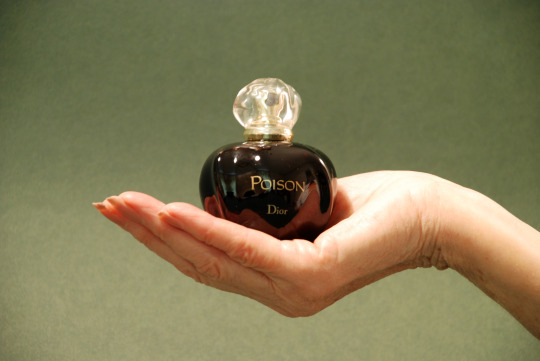
Image: Poison Ladies 2013, Clara Ursitti. Hand model: Pat Ramsay
Workshop with artist Kira O’Reilly
Writing, drawing and physical workshop examining how human and other bodies act in relation to institutions
Monday 23 July, 3-6pm
Free. Sign up by email to [email protected]
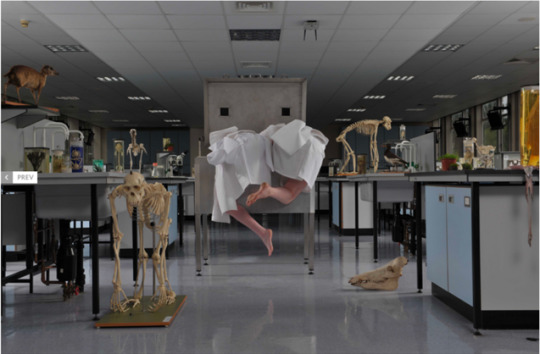
Image: Kira O’Reilly and Jennifer Willet. Refolding (Laboratory Architectures). School of Biosciences at the University of Birmingham, 2010. Photography by Hugo Glendinning
Project Introduction:
How might we trouble the ways we are accustomed to ‘see’ or ‘position’ gender in bodies? When might the infrastructure of an organisation create a gendered experience? Where can we find the ‘in between’ spaces that create more complex and truer understandings of gender and how people experience it differently? Does our behaviour assume something of another person because of their gender? When do we perform so-called masculinity or femininity in order to move forward in a situation.
The title "doing science in a gendered world" is a quote by mathematical biologist and feminist historian of science Evelyn Fox Keller from the 1980s. She was making a case for the importance of who was identifying areas of scientific research, the gendering of language in scientific processes and the infrastructures that had meant that historically, science was typically a field where men worked. The intention of the quote is to highlight that the discussion isn’t simply about ‘women in science’ but recognising that behaviours and organisational systems can influence who does, or continues to do, science.
‘Doing science’ here refers to the collaborative work that is carried out by teams including scientists, technicians, building managers, public engagement officers and administrators. The artists involved in this discussion have all entered into scientific organisations as part of the process of making their artistic work.
Photos from Workshop with Kira O’Reilly
For her workshop, Kira invited participants to examine how bodies (not just human ones) act in relation to institutions, and the kinds of ideas and knowledges that are produced within and with them. The workshop derived from ongoing research by Kira and her collaborator artist Jennifer Willet on the concept of the laboratory as a site to question the relationship between bodies and productions of knowledge.
Workshop participants included artists, scientists, researchers and curators: Ana Hine, Chay Graham, Cicely Farrer, Estelle Fournier, Gordon Douglas, Inke Nathke, Janice Aitken, Kate Clayton, Ker Wallwork, Lada Wilson, Laura Leuzzi, Madeleine Brown, Morgana Blackrose, Sarah Cook, Tamara Richardson, Yvonne Billimore, Zsofia Jakab.
We are grateful to the Learning & Teaching Undergraduate team in the School of Life Sciences at University of Dundee who worked with us to enable our temporary take over of a teaching laboratory and compliance with all Health & Safety rules including collaborative completion of risk assessments and decontamination of the laboratory prior to our workshop.
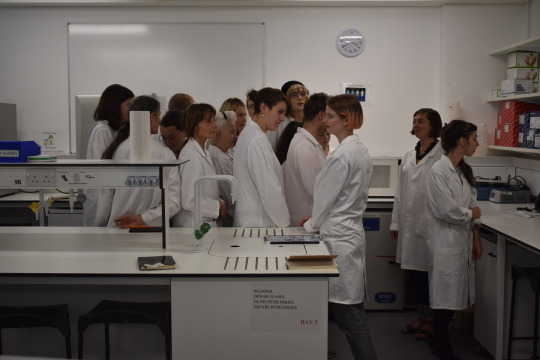
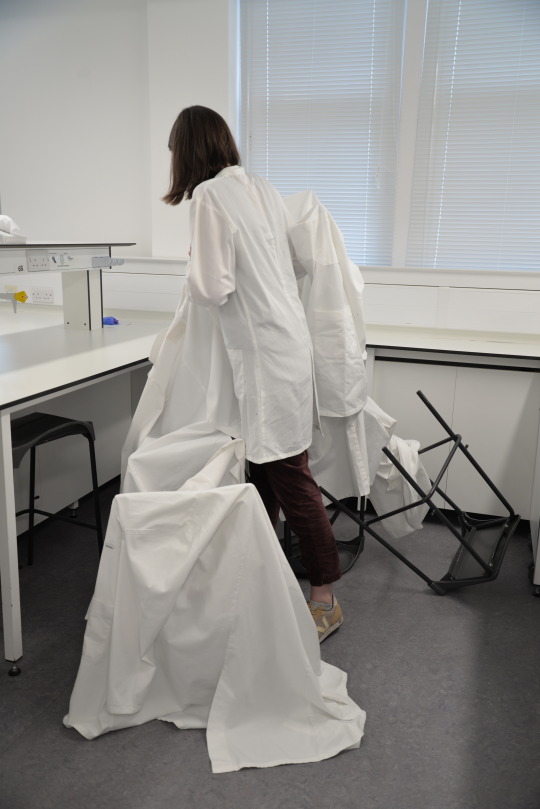

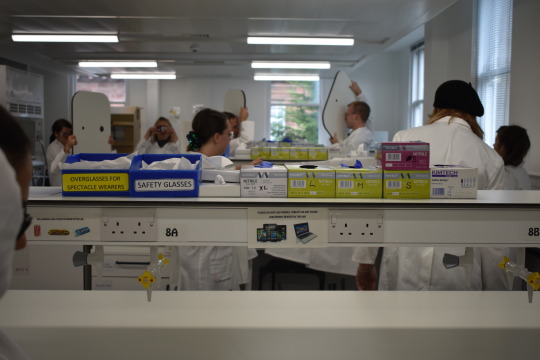
0 notes
Text
What’s Love Got To Do With It?
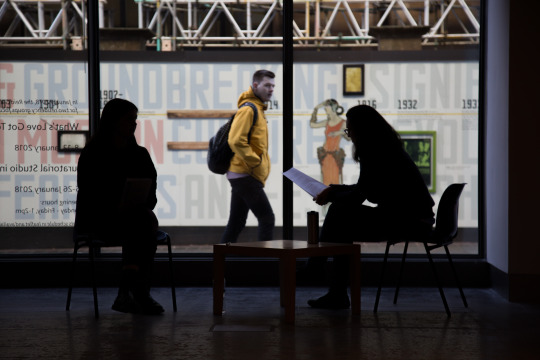
Une exposition performative issue de deux résidences artistiques aux Beaux-Arts de Marseille et à la Glasgow School of Art, avec : Erwan Badir, Suzie Bougon, Aurélien Bouillet, Guilhem Chabas, Gordon Douglas, Cicely Farrer, Sarah Fastré, Charlie Jeffery, Emmie McLuskey, Clémence Mimault, Daniel Mitelberg, Rosie O’Grady, Ciara Phillips, Flore Saunois, Lisa Smets-Astier, Alain Sonneville & Pierre-Claude de Castro, Pierre-Etienne Ursault, Clara Ursitti.
Commissariat : Vanessa Brito et Kirsteen Macdonald
10 – 12 May — Vernissage Thursday 10 may at 18h30
At Galerie ART-CADE
35 Rue de la Bibliothèque, 13001 Marseille
Le travail nous pousse à vouloir faire plus, à vivre avec des deadlines, à être-en-retard, à s’épuiser. Veut-on toujours être performants, à la fois exubérants et exténués par un travail qui ne connaît ni d’arrêt ni de coupure ? Comment continuer à créer et à travailler ensemble ?
Pendant trois jours, des artistes et des étudiants des Beaux-Arts de Marseille occupent l’espace de la Galerie Art-cade pour réinventer le chantier collectif.
Cette exposition est présentée dans le cadre du PAC et de MP 2018
Avec le soutien de l’Institut Français, de la Ville de Marseille, des Beaux-Arts de Marseille (ESADMM), de la Glasgow School of Art, du Glasgow City Council, de Fluxus et de Chapter Thirteen.
http://www.marseilleexpos.com/blog/2018/03/05/whats-love-got-to-do-with-it-mp2018/
Festival publication: http://www.marseilleexpos.com/wp-content/uploads/2018/04/PAC_2018_web.pdf
I developed two new pieces of writing as a result of my participation which I will upload soon. In the mean time, here is a photo of my giving a reading while keeping a lemon safe in my hand.
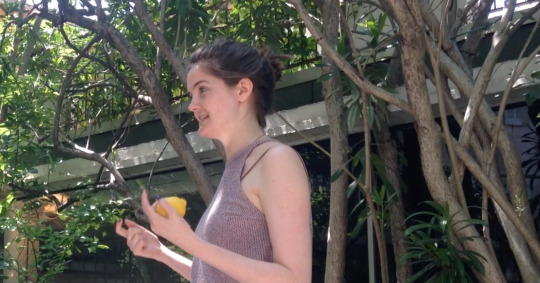
0 notes
Text
Shoulder-to-Shoulder
Shoulder-to-Shoulder
Fieldwork International Summer School
28-30 June 2017
Hospitalfield, Arbroath, Scotland
Programmed by Gordon Douglas and Cicely Farrer
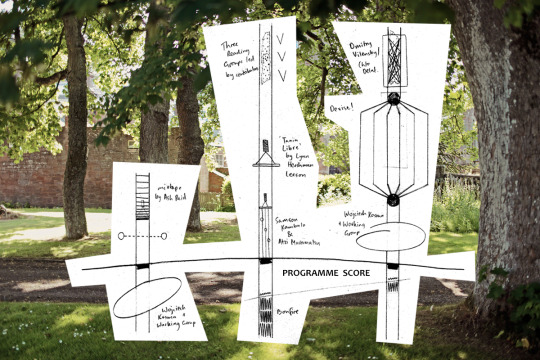
FIELDWORK International Summer School, Shoulder-to-Shoulder, 28-30 June 2017.
The programme drew on the everyday production of art and politics in the contemporary multitude and invited practitioners from a variety of positions to consider these never ending performances. Shoulder-to-Shoulder was an opportunity to dislocate from the activity of individual practice and share new and existing methods of performance that can help us communally devise action within a political climate characterised by division and moralistic opposition.
Shoulder-to-Shoulder presented the first screening in the UK of Lynn Hershman Leeson’s film Tania Libre (2017), documenting renowned Cuban activist and performance artist Tania Bruguera’s experience following an 8-month house arrest in Cuba after her plan to re-stage her performance Tatlin’s Whisper #6 in Havana. Possessing a rare fluency in technologies as they evolve, Hershman Leeson is celebrated for her feminist art practice spanning five decades. Dmitry Vilensky, the founding member of performance collective Chto Delat (What is to be done?) came to the summer school from St Petersburg, Russia to talk about the School of Engaged Art. Since 2003, Chto Delat have been producing projects that aim to merge political theory, art and activism. London-based artist Samson Kambalu, introduced his film-making approach, Nyau Cinema, through a new collaborative performance-lecture with Edinburgh-based composer and cellist Atzi Muramatsu. Kambalu’s work is autobiographical and approaches art as an arena for critical thought and sovereign activities. Wojciech Kosma collaborated with a working group towards the facilitation of an open, large group conversation. Always working with others, Kosma develops staged and sporadic performances that aim to collectively draw out and challenge group production of values. Ash Reid produced a role playing game (RPG)-inspired mixtape for communal car/train/bus journeys to Arbroath. Reid forms her research through public and private collaborative attempts at communicating beyond or around the boundaries of language. The mixtape preceded the summer school as part of an instigated carpool, through which participants were invited to organise shared transport.
FIELDWORK 2017
Gordon Douglas and Cicely Farrer were selected through an open call to co-programme the summer school with Hospitalfield in 2017.

Shoulder-to-Shoulder, brings together art and performance practices to reflect on, test out and rehearse effective political action from within an ‘artistic multitude’.
In recognition of the heightened and urgent responsibility of what it means to create art and culture, we ask:
If art can be a vehicle for self-reflection on individual politics, what is art’s position during this current political moment which appears to be defined by populism and division?
Should our art perform our politics or should we be channelling our political ideas through action?
Drawing from contemporary theories of the ‘multitude’ by the likes of Pascal Gielen, Chantal Mouffe and Paolo Virno (a coexistent, pluralistic grouping of people comprised of divergent opinions, morals, practices and ways of life), the programme invites contributors and participants to reflect on the vernacular of performance and how it could be applied to political modes of artistic action. The programme foregrounded the performance of artistic, collective, political, and active organisation, and how these strategies might implement, what Gielen refers to as a fizz of the artistic multitude.
Set in motion by a pictorial score, Shoulder-to-Shoulder was framed through the device of a scratch night: a theatrical format where performers come together to experiment, try new approaches and rehearse material for an audience of peers. Using scratch as a metaphor to navigate our individual and collective subjective experiences, the 2017 summer school invited active audiences to attend an intensive two and a half day programme of artist talks, performance workshops, reading groups, performances and exhibitions. In a layered arrangement of performative gestures, in a time when generosity in public encounter and the subjective experience of art feel more precious than ever, the structure aimed to prompt the fizz of multitudes and create an invitation to participate.
For Wojciech Kosma’s contribution to Shoulder-to-Shoulder, organisers formed a working group with practitioners from around Scotland through an open invite for notes of interest. The working group consisted of 7 individuals with wide spanning interests including performance, psychology, theatre, music and geography amongst others, who helped facilitate a group conversation with Kosma as part of the summer school. The group attended a study day on 27 June that will drew from the group’s experience and research into performance as a semi-‘rehearsal’ for 2 performed, open discussions throughout the summer school, and provide an opportunity to meet thinkers from different fields with vested interest in ideas of performance.
Resources:
FIELDWORK 2017, Shoulder-to-Shoulder_Schedule
FIELDWORK 2017, Shoulder-to-Shoulder Participant Biographies
FIELDWORK 2017, Shoulder-to-Shoulder References
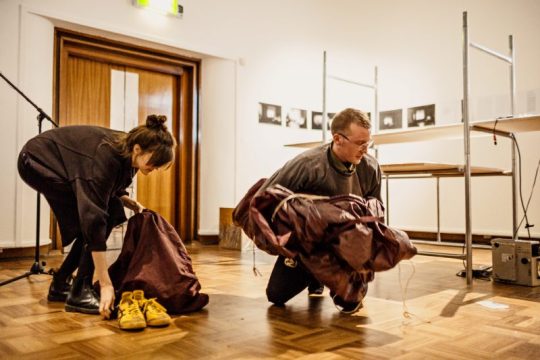
0 notes
Text
Of Other Spaces at Cooper Gallery DJCAD
Between 2014-2017 I worked as Curatorial Assistant on the Cooper Gallery programme at Duncan of Jordanstone College of Art & Design. A significant project that Cooper Gallery Curator Sophia Hao and I developed was the major exhibition and event project Of Other Spaces: Where does gesture become event? which took place from September 2016 - March 2017.
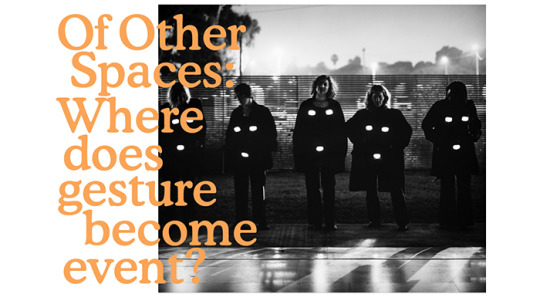
Of Other Spaces was a two chapter exhibition, events programme and 12-Hour Action Group which situated feminist thinking and collaborative organising as a provocative and cogent mode of creative and critical inquiry.
Artists and contributors included Anne Bean, Cullinan Richards, Rose English, Conrad Atkinson, Rose Finn-Kelcey, Margaret Harrison, He Chengyao, Susan Hiller, Alexis Hunter, Mary Kelly, Linder, Lucy McKenzie, Annabel Nicolson, Hannah O’Shea, Siôn Parkinson, Su Richardson, Monica Ross, Jo Spence, Georgina Starr, Amelia Jones, Laura Mulvey, Marina Vishmidt, Gordon Douglas, James Bell, Lynda Morris, Adele Patrick, Althea Greenham, Amy Tobin, JL Williams, Catherine Spencer, Laura Guy, Mele Broomes, Victoria Horne, Kirsty Logan, Sick Sick Sick, content work produce form, Beth Bate, Sarah Smart, Hannah O’Shea.

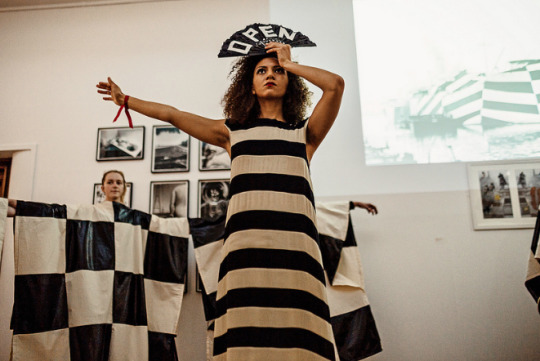
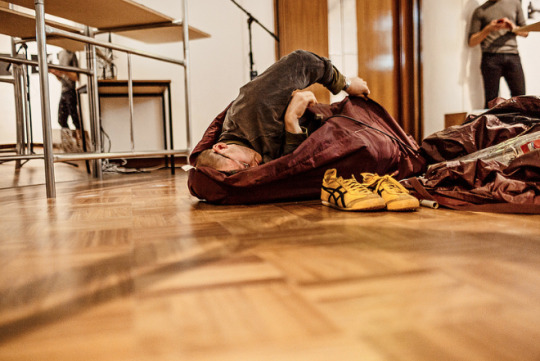
Chapter One: https://www.dundee.ac.uk/cooper-gallery/exhibitions/ofotherspaces/
Chapter Two: https://www.dundee.ac.uk/cooper-gallery/exhibitions/ofotherspaces-chapter-two/#d.en.394776
Cullinan Richards Cooper Summer Residency: https://www.dundee.ac.uk/cooper-gallery/exhibitions/coopersummerresidency2016/
12-Hour Action Group: https://www.dundee.ac.uk/cooper-gallery/events/actiongroupsymposium/
We Dance Ourselves Participatory Dance Workshops: https://www.dundee.ac.uk/cooper-gallery/events/wedanceourselves/#d.en.384777
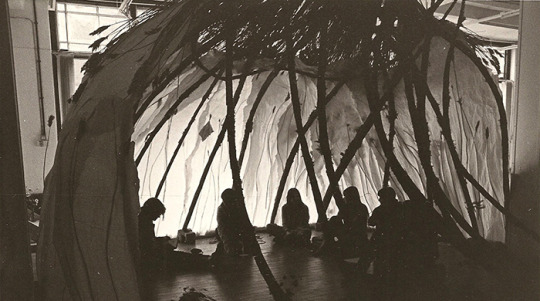
Images:
Mary Kelly, Flashing Nipple Remix, 2005-7
Anne Bean, REACH, performance at 12-Hour Action Group
Performance, conceived by Linder and performed by Lauren Fitzpatrick & volunteers: Love imposes impossible tasks (Part One) at 12-Hour Action Group
An Action by Gordon Douglas with Kate Stobbart: Work-in-Progress at 12-Hour Action Group
Annabel Nicolson, Menstrual Hut, Concerning Ourselves, 1981
0 notes
Text
Curatorial Studio: Living Out Ideas Publication and Events
From January - October 2016 I was part of the peer-learning environment Curatorial Studio. In 2017-2018 I am a co-host of Curatorial Studio with a new group of practitioners.
“Curatorial Studio was a peer-learning environment for fifteen early-career curators from across Scotland, conceived through conversations between Scottish Contemporary Art Network, the curator-led Framework programme, CCA Glasgow and the MLitt Curatorial Practice, Glasgow School of Art and the University of Glasgow. From January to October 2016, we came together every 4-6 weeks for two days around a programme of talks, events and workshops in order to understand our mutual concern and investment towards the term ‘curatorial’, and the discourse we can develop around the circumstances for the curatorial in Scotland – characterised by shared political social impulses, a lack of opportunities, critical forums and support structures. Curatorial Studio are: Frances Davis, Gordon Douglas, Cicely Farrer, Rachel Grant, Marcus Jack, Grace Johnston, Maria Lanko, Gemma Lawrence, Kirsteen Macdonald, Emmie McLuskey, Katherine Murphy, Rosie O’Grady, Frances Stacey, Shireen Taylor, Nick Thomas and Claire Walsh.”
The project culminated in October with the launch of our publication Living Out Ideas and a series of events including a symposium titled “On a Par? A colloquy on enquiry, working together, and curating” for which I contributed a new piece of writing as a ‘fictional recollection of the Curatorial Studio project’ performed by members of Curatorial Studio as an interlude during the event.

The script was drawn from the text I initially developed for the event “Living Out Ideas – Scratch Night with the Curatorial Studio” which was programmed and choreographed by Gordon Douglas as part of Practice Makes Practice – A Social Residency.
The publication Living Out Ideas features contributions from: Anna McLauchlan, Cicely Farrer, Claire Walsh, Emmie McLuskey, Frances Davis, Frances Stacey, Gemma Lawrence, Gordon Douglas, Grace Johnston, Grant Watson, Jason E. Bowman, Katherine Murphy, Kirsteen Macdonald, Lauren Printy Currie, Marcus Jack, Maria Fusco, Nick Thomas, Rosie O'Grady, Shireen Taylor, Viviana Checchia. Printed version distributed by Good Press and supported by SCAN (Scottish Contemporary Art Network).
For the publication, I performed an interview with the curator Grant Watson focusing on his ongoing project How We Behave. In August 2016 we did a case study on How We Behave. You can read the full publication here.
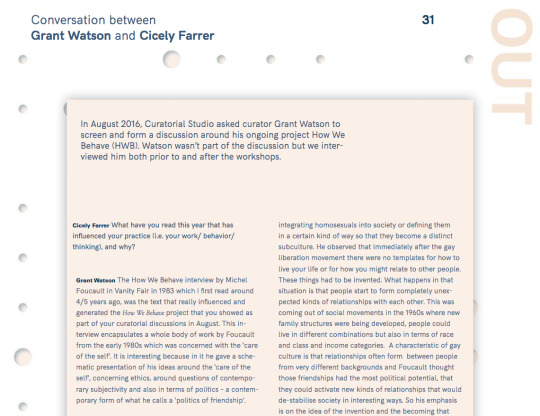
0 notes
Text
500 Boxes of Contraband
Saturday 27 August 3 - 4pm at David Dale Gallery, Glasgow.
Moving image works by Hannah Black, Anibal López (A-1 53167), Jill Magid and Taocheng Wang with live readings from James Bell and Georgia Horgan
David Dale Gallery
161 Broad Street
Glasgow G40 2QR
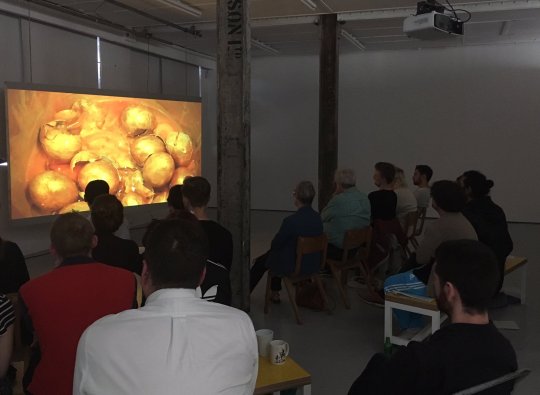
Image: Taocheng Wang, Reflection Paper No.1 (2013). Courtesy of the artist.
David Dale Gallery's Curator In Residence, James Lee, has collaborated with Dundee-based curator Cicely Farrer to organise an event of artist moving image and responsive readings, designed to open up the David Dale Gallery space for speculations on the deployment and actuality of liberalism.
In 2007, Guatemalan conceptual artist Anibal López (1964-2014) paid smugglers to transport 500 empty boxes from Paraguay to Brazil as a piece of conceptual art mimicking the illegal transport routes and testing the state border controls. As a publicised art work, the act itself by a renowned artist, is suspected to have been a cover for the actual smuggling of illegal contraband under the guise of contemporary art. In this work, the artist appropriates the transportation routes of the smugglers, testing neoliberal state infrastructures which advocate for free movement and free markets, yet are not always consistently deploying them.
Reading this art work abstractly, as a repetition of a device in order to deconstruct and confront its contexts, the curators will screen moving image works by Hannah Black, Anibal López (A-1 53167), Jill Magid and Taocheng Wang, and invite artists James Bell and Georgia Horgan to select readings as a response.
Read the programme notes here: https://www.scribd.com/document/326400100/500-Boxes-of-Contraband-Programme-Notes?secret_password=vZdk8bERNISSfmROB3XQ
0 notes
Text
recent writing 2016-17
May 2017
Attempts to deconstruct, devise and perform an improvisational set of rules
Text contribution to Gordon Douglas’ Habits of the Co-existent: Project Book 2
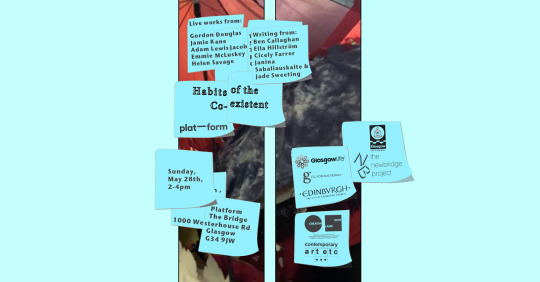
Click to find out more.
April 2017
Speculating on a geological practice
A speculative text to accompany Alison Scott’s exhibition Geoprofesy at Inverness Museum & Art Gallery commissioned by the artist and Timespan Helmsdale.

Click here to read on.
August 2016:
Curatorial Studio for the Scottish Contemporary Art Network Blog
Curatorial Studio is a peer-learning environment for fifteen early career curators from across Scotland, that developed from conversations between SCAN, the curator-led Framework programme, CCA Glasgow and the MLitt Curatorial Practice (Contemporary Art) programme; a partnership between The Glasgow School of Art and the University of Glasgow; mutually concerned about the provision of opportunities, critical forums and support structures for developing curatorial practices.
Click here to read on.
May 2016:
An introduction to Mila Lanfermeijer’s exhibition Cafe Paradies at SSBA Salon in Amsterdam
Earlier this year, curator and writer Cicely Farrer met with artist Mila Lanfermeijer in her studio in Amsterdam on the recommendation of a mutual friend. At that time, Lanfermeijer was at the beginning of a pivotal moment in the development of her new work to be exhibited at SSBA Salon. Having continued their conversation, Farrer has written this article to accompany Mila Lanfermeijer’s exhibition ‘Café Paradies’ at the SSBA Salon.
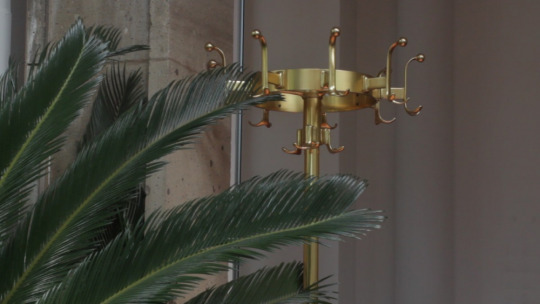
Click here to read on.
January 2016:
Dundee City Guide for Issue 18 of Art Licks
Contributing artists and writers:
Issue 18 includes new work and writing from Rachael Allen, Miriam Austin, Sophie Chapman, Elena Colman, Matthew Drage, Rosa Farber, Cicely Farrer, Francis Field, Jonathan Freemantle, Matt Grayson, Christopher Green, Paul Gwilliam, Lily Hall, Anna Hughes, Marie Jacotey, Boris Jardine, Kerri Jefferis, Emily Jones, Marianne Keating, The Litany Reading Group, Megan Rooney, Eva Rowson, Sarah Thacker.
Click here to see more
0 notes
Text
Review of Giles Bailey & Jeremiah Day
CCA, Glasgow
13 November 2015 - 10 January 2016
Review by Cicely Farrer published on this is tomorrow, December 2015
The complexity of how we live and communicate with one another, through our words, actions, practices and beliefs, and how these amalgamate in the traces we create, and those left for us, is the broad faculty that I’m left considering coming out of this two-man exhibition.
The artists are Giles Bailey (UK) and Jeremiah Day (USA) and, as the exhibition statement points out, these are two artists with distinct practices. As such, they are designated separate spaces in the CCA’s galleries: Bailey’s ambitious installation ‘I Bought a Little City’ (2012-2015) in the first gallery, a selection of Day’s works in the second, and a new moving image work of Bailey’s in the final space. Although without the immediate dialogue of shared sight-lines, Bailey and Day’s pairing creates a multi-layered, sometimes contradicting, but always lively discourse, drawing out new meanings, and deciphering in each other’s those that are less clear.
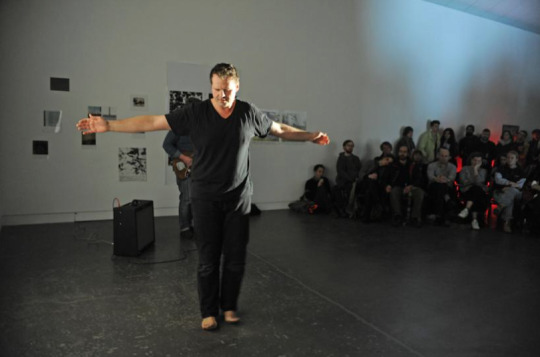
Jeremiah Day, To a Person Sitting in Darkness (#4 Helicopter). Courtesy the artist and CCA.
‘I Bought a Little City’, an installation of film, performance, sculpture and print, builds and dismantles the legacy of an artist inscribed in the identity of a place. In 2012, Bailey went on an artist’s residency to Marfa, Texas, a town now defined by the American artist Donald Judd. In the early 1970s Judd moved there with his family and work, with the apparent ambition of creating a framework for an artistically engaged community and for the permanent installation of his large, throbbing sculptures. Bailey’s installation consists of billboard signs, a lightbox, familiar condiments and appearing on a screen within, the artist speaks. In an apparent critique of Judd’s Marfa, he performs the monologue of a man who buys a city with the aim of improvement but realises the futility of his plans – an appropriation of a short story by a Texan writer called Donald Barthelme. The monologue is synced with two films projected on the back of the billboards, following Bailey’s friend, as he wanders amongst discarded artworks in the landscape of Marfa and Berlin. In addition a series of screen-printed posters unpack moments in Bailey’s own experience while on residence.
Bailey’s two exhibited works are concerned with the physical site where artists have attempted to create a legacy and his consequential relationship to them. In his new film, ‘John & Michael (The Chemical History of a Candle)’ (2015), we see Bailey interpret through symbolic gesture the six lectures of scientist Michael Faraday’s book ‘The Chemical History of a Candle’ (first published 1861) in the back garden of artist John Latham’s Flat Time House in Peckham. The incentive of this textual reference lies in Bailey’s observation that Latham is seen selecting the book in Laure Provost’s film ‘All These Things Think Link’. His ‘in memoriam’ actions would seem less pertinent but for the reminder in the film credits of the impending fate of the setting; Latham’s ‘Living Sculpture’, the building that was his studio for twenty years, housing part of his archive and now an active community art centre forging collaborations with numerous artists and students, will close in 2016 with the future of the building unclear.
While Bailey’s works approach the canons of art practices, Jeremiah Day’s attempt to decipher his personal localities and encounters as a US citizen now in Berlin, within the broader context of the fraught social and political situations of our times. His works across performance, installation, video, photographic imagery, audio narrative and found objects, connect his audience to his concerns through symbolic and bodily aesthesis.
A selection of Day’s works from his practice over the last decade feature, including his ongoing project ‘If You Want Blood’ (2013–) which focuses on land in Berlin where Checkpoint Bornholmer Strasse was located, and earlier works such as ‘The Fall of the Twelve Acres Museum’ (2008), a slideshow accompanied by recorded interview tracking a 1970s land dispute between the Mashie Wampanoag Indians native to New England, USA. Amongst his works, there is a definite method employed; the use of photographic imagery generally layered with related facts, found objects symbolising the specific site and his own presence through performance or remnant thereof.
During the exhibition’s opening night, Day presented a new performance ‘To a Person Sitting in Darkness (#4 Helicopter)’ which unfortunately I wasn’t able to see. Lining one of the walls are a number of framed ‘Performance Notations’ – basically planning drawings, depicting the choreography of his movements in the aforementioned performance with related emotive words. On a monitor resting against the wall as part of ‘If You Want Blood’ (2013), the artist performs on the stoop of a New York tenement building. The statement explains that the intention of the related ephemera is to allow a sense of the performance beyond the live event, which they do. However, I’ve experienced one of his performances before and I longed for the gesture, movement and physical uncertainty of the artist’s presence: the anticipation of a sudden, intended fall, the anxiety (in every stretch) of our current times, and the apparent helplessness that is felt throughout the artist’s and our body.
I might say that both artists deal with the narratives of specific sites, situating themselves as individuals (like us) within the legacies of those places, however this does not really do them justice. The real urgency of their practices is that they don’t follow such specific trajectories. The methods used to communicate their narratives, through spoken word, broken thoughts, gesture and ephemera, reflect the multifarious nature of how we experience the events that have past and those we create and live through.
0 notes
Text
To be or to do, to work and not to make?
Saturday 26 September 2015, 3-5pm
Kinning Park Complex, Glasgow
Starting with the provocation that “one shouldn’t make a living from making work”, curators John Bloomfield (London) and Cicely Farrer (Dundee) present a public conversation and screening event to look at how the economic practicalities of making a living might feed into the form and content of art.
Part of The Telfer Gallery's Extended Programme of Charlie Godet Thomas' forthcoming exhibition To be is to do, To do is to be, Do be do be do, 19 Sept-4 Oct 2015, the event interrogates the connections between being and doing, between making a living and making work.

Screenings will include films and extracts from contemporary artists such as Patrick Goddard; case studies of historical films like Jean-Luc Godard’s Le Rapport Darty (1989); and ‘provocations’ from the curators drawn from interviews conducted by with artists in London, Glasgow and Europe with the intention to open up a discussion on the tensions arising.
'To be or to do, to work and not to make?' is the first public event of Bloomfield and Farrer’s ongoing research project into self-sufficiency and autonomy.
http://www.the-telfer.com/
http://www.kinningparkcomplex.org/
Tickets: https://www.eventbrite.co.uk/e/to-be-or-to-do-to-work-and-not-to-make-tickets-18570437679
0 notes
Text
Objective Considerations of Contemporary Phenomena
Nicole Bachmann, Kenneth Goldsmith, Patrick Goddard, Lawrence Abu Hamdan and Kim Schoen with contributions from Nina Power, Jean-Marie Straub and Danièle Huillet
curated by John Bloomfield and Cicely Farrer
PV Thursday 27 November 2014, 6-8pm
Informal tour with Patrick Goddard, John Bloomfield and Cicely Farrer on Saturday 29 November, 2pm
Nicole Bachmann performance and drinks at Space In Between and MOT Projects on Tuesday 16 December, 7.30pm
vimeo
Objective Considerations of Contemporary Phenomena from John Bloomfield on Vimeo.
Objective Considerations of Contemporary Phenomena1 – a vague and pompous exhibition title of the kind we’re not supposed to use anymore.2 Meaning buried amongst endless distracting footnotes.3 A pretentious and oblique allusion to a writer who is out of fashion anyway.4
Outside of the art world press release there are plenty other options for those who don’t want to speak or write English good: stretched metaphors, unnecessary abstraction, verbal false limbs, transposition from one context to another, jargon, imprecision, vagueness, obscurity, lack of clarity, repetition and so on. Before misuse or abuse, the mechanics of language are already fragile and riddled with glitches: multivalence, phatic language and imagery with built-in obsolescence – not to mention the irregularities thrown up by translation between over six thousand different language systems.
Objective Considerations of Contemporary Phenomena(OCCP) is an exhibition of newly commissioned and recent art works across sculpture, textile, moving-image and installation, accompanied by examples from cinema and philosophical discussion. The exhibition looks at faults in both machine and operator, and asks what the stakes are for a reappraisal of our relationship to language. What are the politics of a language that fails to speak, and what are the poetics of that failure?
1. “Objective considerations of contemporary phenomena compel the conclusion that success or failure in competitive activities exhibits no tendency to be commensurate with innate capacity, but that a considerable element of the unpredictable must invariably be taken into account”, George Orwell from ‘Politics and the English Language’, 1946. See footnote 3.
2. Alix Rule & David Levine, ‘International Art English: On the Rise – and the space – of the art world press release’, Triple Canopy, no. 16, July 2012.
3. Disingenuously, our title comes from a section of Orwell’s essay in which he demonstrates exactly how English is ‘in a bad way’. One has to call it something. See footnote 1.
4. Will Self, ‘A Point of View: Why Orwell was a Literary Mediocrity’, BBC News Magazine, 31st August 2014. In which Self reminds us that bad writing begins with bad reading.
This project is kindly supported by Arts Council England.
OCCP was reviewed by Anneka French for this is tomorrow – read the review here.
Nicole Bachmann is a London based artist working in performance and writing. For OCCP Bachmann will present her newly commissioned textile She Said, She Says and performance work She Says (2014). Bachmann’s work often uses sonic techniques to consider how language, meaning and affect, change through acoustic layering. Bachmann draws attention to human alterations in tone, echo, tempo and voice as she adjusts volume and frequencies to entice and choreograph the listening habits of her audience. Graduating from Goldsmiths with an MFA in Fine Art, in 2014 Bachmann was shortlisted for the Swiss Art Awards. As co-founder of Performance as Publishing with artist Ruth Beale, she has developed a practice led research project considering ideas of the written word and text through the medium of performance. She has previously presented her work at Modern Art Oxford, Kunsthalle Basel, Rowing and Turner Contemporary.
vimeo
Says She Said, 2014 by Nicole Bachmann from Performance as Publishing on Vimeo.
Kenneth Goldsmith is an American poet and founder of online resource ubuweb. In 2013 he was appointed the Museum of Modern Art’s first Poet Laureate. For OCCP he will contribute his now canonical 2001 artist’s bookSoliloquy, a written record of every word and utterance made by the artist over the course of a week. The work reveals the banality and richness of everyday speech, and calls into question the relationship between the verbal and written word and their place in the gallery.
London-based artist Patrick Goddard’s multi-media installation Money Talks and Talk is Cheap (2014) is a new commission for this exhibition. With his voice drastically pitched down, Goddard’s voiceover draws on economic jargon and cliché to create a dense poetics of nonsense. A deadpan display of language’s variety and possibility, it is also a warning against ornamentation for the sake of ornamentation. A new wall drawing, The Dark Lord (2014), completes the installation, collecting and isolating metaphors used by George Osborne in political speeches. Goddard will be exhibiting at Matt’s Gallery in Revolver II at the same time as OCCP and has previously shown at Wysing Art Centre; Whitechapel Gallery; S1 Sheffield; Jerwood Gallery and BFI Southbank. Goddard’s recent graphic novel Operation Paperclip launched in summer 2014 at Matt’s Gallery.
Lawrence Abu Hamdan’s work often deals with the relationship between listening and borders, human rights, testimony, truth and law, through the production of audio-visual installations, graphic design, sculpture, photography, workshops and performance. His work with sound and its intersection with politics originate from his background in DIY music. For this exhibition he is contributing an audio documentary and installation work The Whole Truth, which looks at contemporary lie detection technology that analyses the voice that speaks rather than the words spoken. Abu Hamdan has recently exhibited at Tate Modern (Project Space); The Showroom, London; M HKA, Antwerp; Van Abbe Museum, Eindhoven; and Lisa Cooley, New York. He is part of the team Forensic Architecture at Goldsmiths College London where he is a PhD candidate and lecturer.
Kim Schoen is a Los Angeles based artist, working with photography and moving image installations. Is it the Opera or Is It Something Political? (2009) stitches together otherwise meaningful phrases into an endless stream of non-sequiturs. Re-working both visual and linguistic forms of rhetoric, Schoen explores the malleability of speech, its translation into texts and images and back again. She received her MFA in photography from CalArts in 2005 and her Mphil in photography at the Royal College of Art in 2008. Recent exhibitions of her work include Stupidious(South London Gallery, London); Unsparing Quality (Diane Rosenstein Fine Art, Los Angeles); and A Voyage Around My Room (Norma Mangione Gallery, Turin). Schoen is also the co-founder and editor of the journal MATERIAL, a platform for writing by visual artists.
Nina Power has a wide range of interests, including philosophy, film, art, feminism and politics. She is the author of One-Dimensional Woman (2009) and is interested in independent publishing and reviving certain political forms and genres of writing, such as the polemic, the pamphlet, the declaration and the address. Power writes for a variety of different publications and journals, in a variety of genres and on various different topics (including music, critical theory, film, policing and protests). Some of the publications she regularly contributes to include frieze, The Wire, Radical Philosophy, the Guardian, Cabinet, Film Quarterly, Icon, The Philosophers’ Magazine. Power is currently working on two book-length projects – one on the topic of work and the other on the history of the collective political subject. Power received her PhD in Philosophy from Middlesex University on the topic of Humanism and Anti-Humanism in Post-War French Philosophy, and also has an MA and BA in Philosophy from Warwick. She has taught at Middlesex, Orpington College, London College of Communication, Morley College and Roehampton University, where she is also currently a Senior Lecturer in Philosophy. She is a fellow of the RSA and a member of the British Philosophical Association.
For this exhibition she will be contributing a text building on her 2012 talk The Spectre of the Public: The Ideology of Law and Order, which analyses how politicians exploit the openness of the term ‘public’ to refer at different times to both an offending mob and a group that must be protected.
Jean-Marie Straub and Danièle Huillet were a French filmmaking duo who made over 24 films between 1963 and 2006. In OCCP their feature film allows us a look across the threshold of language at a different signifying system. Les yeux ne veulent pas en tout temps se fermer, ou Peut-être qu’un jour Rome se permettra de choisir à son tour (1970), otherwise known as Othon, combines non-francophone actors, Pierre Corneille’s seventeenth century alexandrine couplets, and a labyrinthine plot, to suggest how meaning can be lost in multiple ‘translations’.
0 notes
Text
Review of Textiles: Open Letter
23 June - 10 November 2013, Museum Abteiberg.
Published in Textile: The Journal of Cloth and Culture
Volume 12, Number 2, July 2014, pp. 240-245(6)
Bloomsbury Journals
by Cicely Farrer
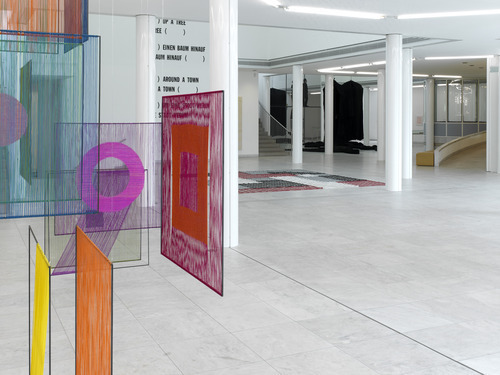
Installation view of Textiles: Open Letter at Museum Abteiberg. Image: Achim Kukulies. Courtesy of Museum Abteiberg Mönchengladbach.
0 notes